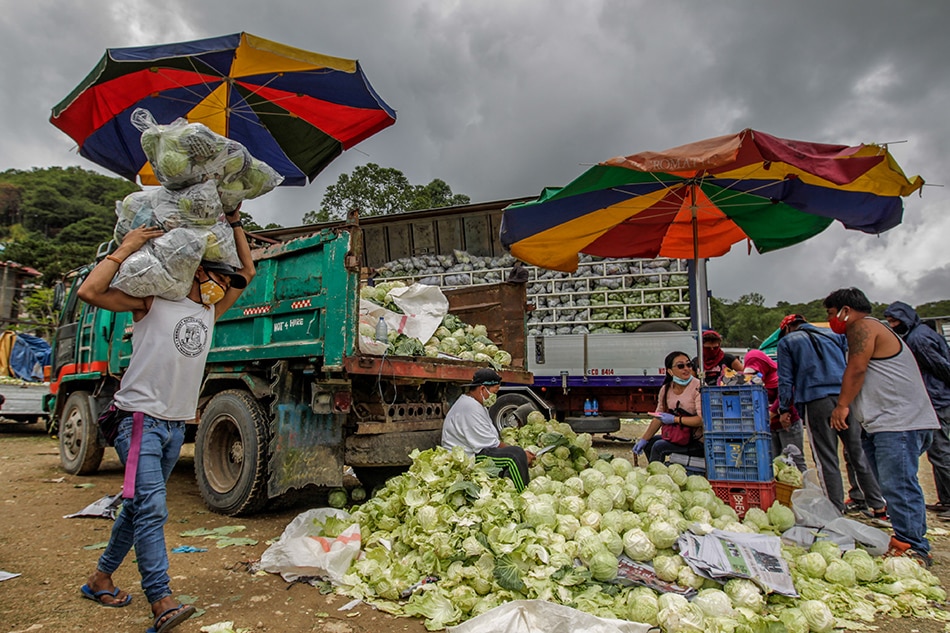Cordillera region now 'moderate risk' for COVID-19: health dept | ABS-CBN
ADVERTISEMENT

Welcome, Kapamilya! We use cookies to improve your browsing experience. Continuing to use this site means you agree to our use of cookies. Tell me more!
Cordillera region now 'moderate risk' for COVID-19: health dept
Cordillera region now 'moderate risk' for COVID-19: health dept
Gillan Ropero,
ABS-CBN News
Published Aug 05, 2022 05:59 PM PHT
MANILA — The Department of Health has classified the Cordilleras under "moderate risk" for COVID-19 cases, its officer-in-charge said Friday.
MANILA — The Department of Health has classified the Cordilleras under "moderate risk" for COVID-19 cases, its officer-in-charge said Friday.
The Cordillera region's average daily attack rate, or the number of new cases over a 2-week period divided by its population, was at 6.10 cases per 100,000 people, according to DOH officer-in-charge Maria Rosario Vergeire.
The Cordillera region's average daily attack rate, or the number of new cases over a 2-week period divided by its population, was at 6.10 cases per 100,000 people, according to DOH officer-in-charge Maria Rosario Vergeire.
The DOH earlier classified Metro Manila under moderate risk. It now has an ADAR of 8.67 cases per 100,000 population, Vergeire said.
The DOH earlier classified Metro Manila under moderate risk. It now has an ADAR of 8.67 cases per 100,000 population, Vergeire said.
Calabarzon is nearing the "moderate risk" ADAR threshold at 4.8 cases per 100,000 population, she added.
Calabarzon is nearing the "moderate risk" ADAR threshold at 4.8 cases per 100,000 population, she added.
ADVERTISEMENT
"All areas [are] still at continuous uptrend with the rest of Luzon...increasing with the fastest rate, reporting more than 1,000 cases per day in recent few days," she told reporters.
"All areas [are] still at continuous uptrend with the rest of Luzon...increasing with the fastest rate, reporting more than 1,000 cases per day in recent few days," she told reporters.
Metro Manila's neighboring provinces or the "Plus areas," and Mindanao are reporting "less than 800 cases per day," Vergeire added.
Metro Manila's neighboring provinces or the "Plus areas," and Mindanao are reporting "less than 800 cases per day," Vergeire added.
The country recorded 25,967 new infections from July 29 to Aug. 4, or an average of 3,710 cases, according to the DOH officer-in-charge. This is a 16-percent increase from the previous week or the same level of cases during the second week of February this year, she said.
The country recorded 25,967 new infections from July 29 to Aug. 4, or an average of 3,710 cases, according to the DOH officer-in-charge. This is a 16-percent increase from the previous week or the same level of cases during the second week of February this year, she said.
The Philippines remains under "low risk" with an ADAR of 3.13 cases per 100,000 population, she added.
The Philippines remains under "low risk" with an ADAR of 3.13 cases per 100,000 population, she added.
The national positivity rate has also risen to 18 percent, similar to figures in February, Vergeire said.
The national positivity rate has also risen to 18 percent, similar to figures in February, Vergeire said.
ADVERTISEMENT
The country's COVID bed utilization and intensive care unit (ICU) occupancy, however, remains "low risk" despite a "slow incline" in the past week, Vergeire added.
The country's COVID bed utilization and intensive care unit (ICU) occupancy, however, remains "low risk" despite a "slow incline" in the past week, Vergeire added.
Coronavirus hospital admissions were up 11 percent and bed utilization increased by 3 percent to 31 percent, Vergeire said.
Coronavirus hospital admissions were up 11 percent and bed utilization increased by 3 percent to 31 percent, Vergeire said.
ICU occupancy increased to 21 percent while dedicated beds decreased by 6 percent to 26 percent, she added.
ICU occupancy increased to 21 percent while dedicated beds decreased by 6 percent to 26 percent, she added.
Bangsamoro region's ICU utilization was classified as "moderate risk" due to 96 active cases, including 2 severe and critical patients, Vergeire said.
Bangsamoro region's ICU utilization was classified as "moderate risk" due to 96 active cases, including 2 severe and critical patients, Vergeire said.
Calabarzon and Western Visayas are also nearing the threshold, with "more than 40 percent" total bed utilization, she added.
Calabarzon and Western Visayas are also nearing the threshold, with "more than 40 percent" total bed utilization, she added.
ADVERTISEMENT
The entry of more transmissible omicron subvariants -- BA.2.75, BA.5, BA.4, and BA.2.12.1 -- is a factor in the country's continuously rising virus infections, Vergeire earlier said.
The entry of more transmissible omicron subvariants -- BA.2.75, BA.5, BA.4, and BA.2.12.1 -- is a factor in the country's continuously rising virus infections, Vergeire earlier said.
The public's increased mobility, waning immunity, and lower compliance to health standards also contribute to the rise in cases, Vergeire added.
The public's increased mobility, waning immunity, and lower compliance to health standards also contribute to the rise in cases, Vergeire added.
RELATED VIDEO
ADVERTISEMENT
ADVERTISEMENT



